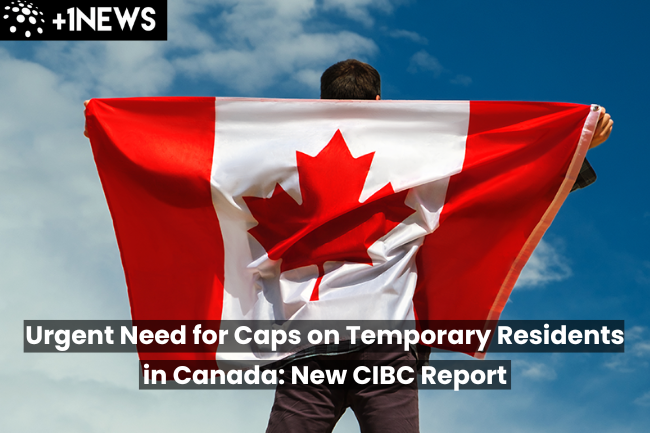In a recent report dated August 30, 2023, the Canadian Imperial Bank of Commerce (CIBC) has drawn attention to a critical issue in Canada’s demographics – the undercounting of temporary residents.
This CIBC report brings to light the urgency of implementing policies to cap the number of temporary residents, especially international students.
In this article, we will dive into the key findings of the CIBC report and understand why swift action is essential.
Jump to:
The Hidden Gap in Temporary Residents Numbers:
According to this recent report, Canada’s official count for non-permanent residents (NPRs) or temporary residents (TRs), which is used for planning purposes, falls short by one million compared to the actual number of individuals living in Canada.
“The official number of NPRs that is widely quoted and used for planning purposes undercounts the actual number of NPRs residing in Canada by close to one million,”
The report by Benjamin Tal, deputy chief economist at CIBC.
This undercounting carries significant implications for housing, services, and planning for the future.
Statistics Canada’s data on population growth in Canada has shown an undercount of temporary residents, primarily due to the significant disparity between the figures reported in the Census and the more dynamic quarterly and annual estimates.
“Even if by a miracle we start doing all the right things to increase housing supply, it will take years for that supply to come to the market. Meanwhile, demand is rising fast.”
The CIBC report
Why Urgency Matters:
The report stresses the urgency of addressing this issue due to the growing focus on increasing the number of temporary residents in Canada.
With a special focus on international students, the need for capping their annual intake becomes even more pronounced. Immediate action is required to ensure that these plans do not face unnecessary delays.
“The practical implication of that undercounting is that the housing affordability crisis Canada is facing is actually worse than perceived, and calls for even more urgent and aggressive policy action, including ways to better link the increase in the number of NPRs to the ability to house them,”.
The CIBC report
Undercounting Factors:
Various factors contribute to the undercounting of temporary residents. For instance, some temporary residents, fearing reprisals or uncertainty about participation requirements, choose not to engage in the census process.
Additionally, Statistics Canada’s assumption that temporary resident visa holders leave the country within 30 days of visa expiration does not align with the actual behaviors of many temporary residents.
Overstaying Reality:
One of the most significant revelations of the report is the prevalence of overstaying among temporary residents. Despite visa expirations, a substantial number of temporary residents, including international students, remain in Canada.
The report estimates that over 750,000 temporary residents overstayed between 2017 and 2022. However, this figure might be even higher, as the report doesn’t account for individuals with expired status who haven’t yet applied for temporary or permanent residency.
Impact on Housing Affordability:
The consequences of this undercounting extend to Canada’s housing affordability crisis. The mismatch between officially reported and actual population numbers amplifies the demand for housing and services.
Even if efforts are made to boost the housing supply, the report asserts that it will take years for a new supply to meet the escalating demand, making immediate action all the more crucial.
Clarifying International Student Situation:
Canada is on track to welcome around 900,000 international students this year, said Immigration Minister Marc Miller. This means that Canada will not close its doors to international students.
However, the government is actively working on establishing a mechanism to cap the annual intake of international students.
Conclusion:
In conclusion, the CIBC report highlights a significant problem in Canada – the undercounting of temporary residents. This issue has serious consequences for housing and services.
It’s crucial to take immediate action to address this gap, control the influx of temporary residents, and align planning with the real demographics.
Canada needs to strike a balance that benefits everyone while preserving its global attractiveness to international students and temporary residents.














